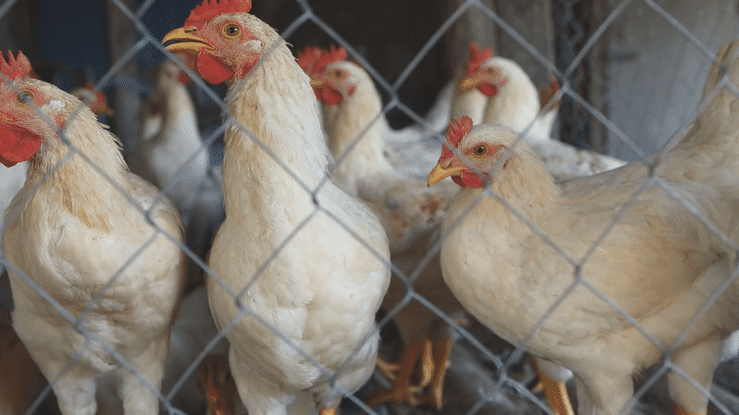
Mar 01, 2023 Bird Flu: Highly Pathogenic Avian Influenza – An Update
In the last few years, a highly pathogenic H5N1 avian influenza (HPAI) virus has caused the deaths of millions of seabirds and waterfowl worldwide, and many more millions of factory-farmed poultry being culled to halt the spread of the virus. WBI wrote about the emergence of this virus and its potential danger to humans in our last WellBeing News. The virus continues to spread and mutate and has caused the deaths of some mammals and a few humans.
According to a recent article in Science, the virus was first detected in 1996 at a goose farm in China. A significant virus outbreak among poultry in Hong Kong a year later led to the first human deaths “and sparked the first pandemic fears.” A few years later, the virus spilled over into wild birds. Their migrations have since spread HPAI variants worldwide in several big waves. The new version of the virus (variant 2.3.4.4b) that emerged in 2020 appears better adapted to infect birds than the previous versions. Typically, H5N1 avian flu viruses do not infect mammals or humans. However, from 2003 to January 5th, 2023, the World Health Organization (WHO) reports 868 human infections with the H5N1 virus and 457 deaths (a case fatality rate of 53%). Seven new H5N1 human avian flu infections have led to two deaths in the last three years.
An avian influenza virus was the agent that caused the 1918 Spanish Flu pandemic. Spanish flu infected around a quarter of the world’s human population (and led to the deaths of approximately 50 million people or 1-2% of the global population). Typically, avian influenza viruses do not spread from human to human. However, the avian flu virus responsible for the Spanish flu had acquired mutations that allowed it to spread quickly among humans. Michael Greger, a physician, has written about this pandemic and the potential for the emergence of another avian flu virus that could cause a repeat of the Spanish flu. According to a review in the Virology Journal, “Greger’s book is the best of its genre and deserves to be read by anyone concerned about human and animal health.”
Another book, Virulent Zones, by anthropologist Lyle Fearnley, discusses why farming conditions in south-eastern China provide appropriate conditions for the emergence of viral pandemics. According to one comment by a sociologist, the book will provide readers with a “visceral understanding of the phrase One Health, as they journey with scientists and epidemiologists through the bodies and ecologies of animal viruses in China.”
The current HPAI virus is now, worryingly, being found in an increasing number of mammalian species (farmed mink, sea lions, otters, foxes, and three young grizzly bears in Montana). So far, the virus does not appear to have mutated to a form that can spread from human to human, but its discovery in other mammals is a cause for significant concern. The avian viral outbreak on the mink fur farm in Spain appeared to spread from mink to mink.
Intensive animal husbandry systems for poultry and pigs, where many animals are crammed together in very tight quarters, provide a perfect environment for the evolution of new variants of avian and swine viruses that could cause another global pandemic. The World Health Organization (WHO) oversees a Pandemic Influenza Preparedness (PIP) Framework launched in 2011 to guard against pandemic threats. The World Organization for Animal Health, in collaboration with the Food and Agriculture Organization, has established a partnership to track and monitor outbreaks of animal influenza. At the moment, the main impact of the current HPAI outbreak has been on poultry and egg producers. During 2022 and early 2023 in the United States, over 58 million birds were culled to control the spread of the H5N1 avian flu virus. This number topped the birds culled in 2015 because of an earlier H5N1 outbreak. The virus is also unusually lethal for wild birds, many of whom have died across the Americas, while sea lions in Peru have contracted the disease. For the first time, the virus has been detected in at least thirteen countries in Latin America and the Caribbean (but not yet in Brazil – a major poultry producer and exporter).
The current avian flu outbreak has revived the possibility of vaccinating domestic poultry against avian influenza. In the face of the current global spread of avian flu, many countries are vaccinating poultry against bird flu, including Mexico, China, and Egypt. The European Union is also exploring implementing a bird flu vaccine strategy. However, there are questions about vaccine effectiveness and other challenges. For example, countries that export poultry want to be sure that they can discriminate between a vaccinated bird and one infected with avian influenza and, hence, capable of spreading the disease.
The United States, Britain, France, and Japan have all experienced record poultry losses over the past year. Poultry used to be considered most at risk when wild birds engage in their spring migrations, but the endemic nature of the current avian flu virus means that poultry farmers now face high risks from the virus year-round.
Avian (and swine) influenza is a percolating threat to the world. Current intensive animal husbandry systems create conditions that produce cheap meat but are also perfect for the evolution of a pandemic virus that would have severe implications for human well-being. See also the companion story in this newsletter on the links between animal welfare and worldwide sustainability.
WBI continues to call for greater attention to the emergence of this virus, its potential danger to humans, and the urgent need to address the many threats arising from how animals are housed and raised by the world’s food system.


